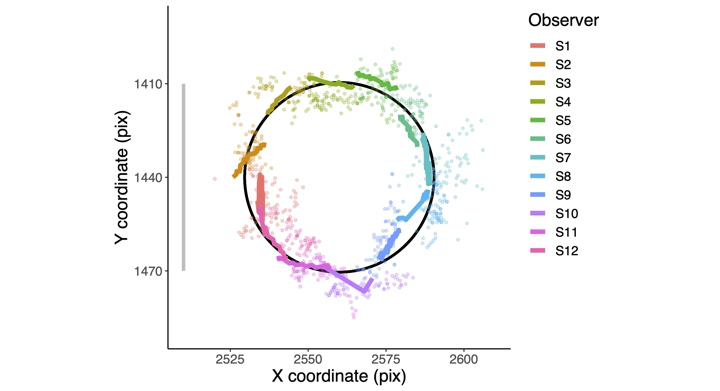EasyEyes — A new method for accurate fixation in online vision testing
Nov 28, 2023·,,,,,,·
0 min read
Jan W. Kurzawski*
Maria Pombo*
Augustin Burchell
Nina M. Hanning
Simon Liao
Najib J. Majaj
Denis G. Pelli

Abstract
Online methods allow testing of larger, more diverse populations, with much less effort than in-lab testing. However, many psychophysical measurements, including visual crowding, require accurate eye fixation, which is classically achieved by testing only experienced observers who have learned to fixate reliably, or by using a gaze tracker to restrict testing to moments when fixation is accurate. Alas, both approaches are impractical online as online observers tend to be inexperienced, and online gaze tracking, using the built-in webcam, has a low precision (±4 deg). EasyEyes open-source software reliably measures peripheral thresholds online with accurate fixation achieved in a novel way, without gaze tracking. It tells observers to use the cursor to track a moving crosshair. At a random time during successful tracking, a brief target is presented in the periphery. The observer responds by identifying the target. To evaluate EasyEyes fixation accuracy and thresholds, we tested 12 naive observers in three ways in a counterbalanced order: first, in the laboratory, using gaze-contingent stimulus presentation; second, in the laboratory, using EasyEyes while independently monitoring gaze using EyeLink 1000; third, online at home, using EasyEyes. We find that crowding thresholds are consistent and individual differences are conserved. The small root mean square (RMS) fixation error (0.6 deg) during target presentation eliminates the need for gaze tracking. Thus, this method enables fixation-dependent measurements online, for easy testing of larger and more diverse populations.
Type
Publication
Frontiers in Human Neuroscience